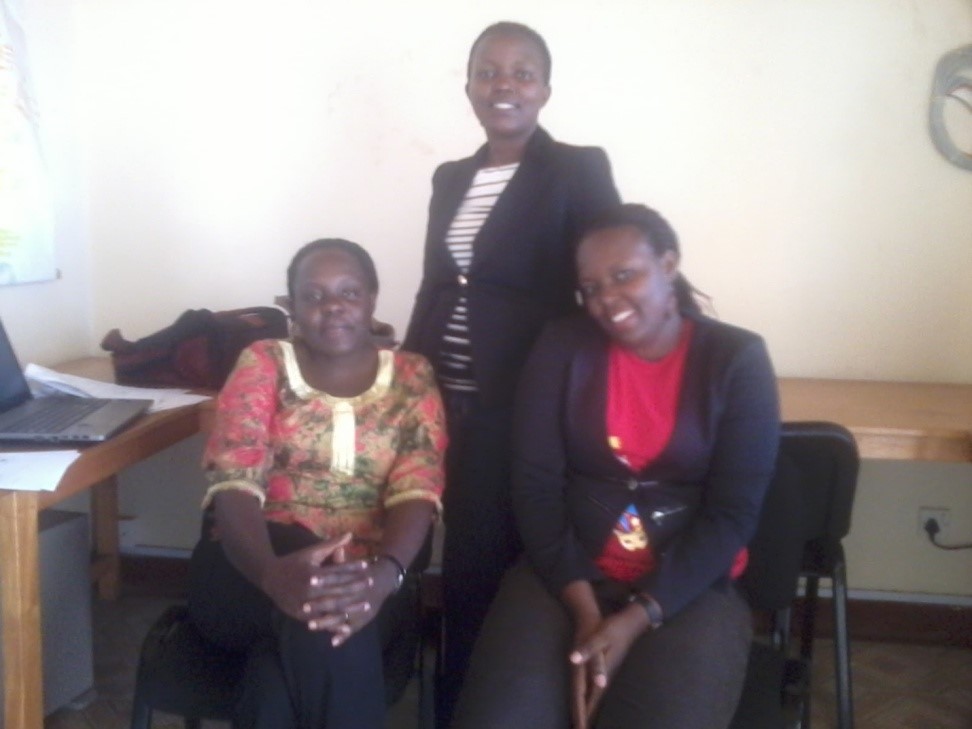Tips from the Field…
THE WITNESS – Facts about tracking participants in a local setting
By: Catherine Kahinda, Flavia Ninsiima, Catherine Kyampire & Shiphrah Nantongo
Retention of participants into a research study is as important as recruitment. It does not usually make sense to recruit participants whom you are unable to follow up and this has always been a driving factor for the Ugandan Research Team to devise all of the possible strategies to ensure high follow up rates of participants enrolled into the Uganda ARCH (ADEPT) Study.
It was a Wednesday morning; a perfect day for a home visit to be conducted, considering there was much less happening at the field site office. Being the punctual gentleman he has always been, the driver is on time for the appointment previously made and we head straight away to Kibona village, which is approximately 15 km away from Mbarara. This particular home visit was a rare one since the participant was last at home two years ago. She always kept her clinic appointments which coincided with study visits and was often successfully reached via her phone or through her contacts. Unfortunately, despite several attempts, all of the phones, including those of her contacts, could not be reached this time around.

Due to the rainy season, the village roads have been affected and were almost impassable. The car suddenly got stuck in the muddy road and there were two options – to push it or abandon it at this point. Nevertheless, we were still determined to locate the participant’s home. We decided to walk for the remaining distance of 2km and we were finally able to find our way to the participant’s home. But alas, her home was locked, no immediate neighbors were around, and we had absolutely no idea as to the whereabouts of the subject. With just a week left before her window period closed, we were determined to find a way to communicate with the participant.
Usually in such instances, where an RA makes a home visit and fails to find the participant, we resort to writing a note with a phone number. Then, we either slide the note under the door or leave it with a neighbor requesting that he/she pages or calls when they return. If they do not call back, we conduct two more home visits on different days. The note may read:
“Hello (name of participant), this is (name of RA). I would like to talk to you, would you please contact me on (RAs phone number) as soon as you can? Thank you.”
In this particular case, the lady was illiterate, so we decided to take a slight walk to get to the nearest neighbor that we could find. We found a home with an elderly couple that warmly welcomed us and we informed them that we are in pursuit of the participant (we gave the name of the participant as used in the study). However, we learned that she went by a different name. According to her description and the use of her son’s name (that was previously given to us as a contact person), we were able to figure out that the person we were looking for. The couple’s granddaughter was willing to lead us to the place where our participant was assumed to be carrying out her chore duties. So, the home visit turned out to be successful!!
In case the neighbors are not of help, the message left at home may not yield any fruitful results along with unsuccessful phone calls and home visits. In this case, the participant will be marked as missed for this particular study visit. However, all hope is not lost. We then embark on crosschecking with the clinic database to establish when the patient is next expected at the clinic, even if this may be outside the window period for the visit. When the participant finally shows up, we establish new contacts, which eases tracking for the next study visit.
The above scenario demonstrates a number of challenges that arise for the research assistant in order to find a participant scheduled for a follow-up visit. These include, but are not limited to:
• Participant using names at home different from the ones provided to the clinic and the study
• Shifting to unknown places, both residential and workplaces
• Inconsistent and unreliable phone numbers
• Participants being imprisoned and falling out of care from the clinic
• Participants getting married and changing their original location
• Since home visits are made without any notice, the chances of not finding anybody at home are high
• Participants transferring to other clinics without notification
• Disclosure issues and maintaining confidentiality – we are meant to answer tough questions from immediate relatives regarding our relationship with participants
• Mistaken identities as we traverse villages, especially from the neighbors who regard us as spies or strangers planning to grab their land
• Participants getting disinterested in the study procedures
However, in one way or another, there is always a solution sought to minimize the effects and ensure high participant retention.